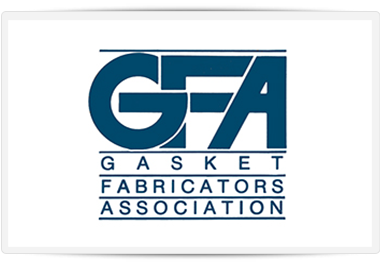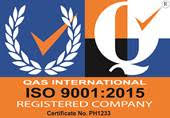Neoprene Sponge & Neoprene Foam Material Guide: Properties, Types & Applications
Neoprene is a popular elastomer found in virtually every industry. Read more about Frank Lowe's neoprene sponge & neoprene foam custom die cut & fabrication services.
Neoprene is a very popular elastomer found in almost every industry. Neoprene is commonly referred to as chloroprene (CR) — its chemical name, which is also called neoprene sponge or neoprene foam rubber.
Request a free quote and sample of this product
Neoprene sponge or neoprene foam rubber is black-colored and utilized across industries. Neoprene rubber materials offer exceptional physical properties, including:
- Moderate levels of UV and weather resistance, which makes it perfect for weather stripping,
- Petroleum resistance that makes it ideal for industrial gaskets applications;
- UV and ozone resistance for outdoor uses,
- And oil resistance.
As the synthetic alternative to natural rubber, neoprene sponge rubber is available in:
- Solid Sheet Neoprene Foam Rubber
- Open Cell Neoprene Foam
- Closed Cell Neoprene Rubber
Today, neoprene sponge or neoprene foam rubber makes up a massive industry — meeting the demands of multiple billion pounds every year. Neoprene foam rubber offers a range of admirable qualities, but its ability to shine and perform across an expansive list of commercial and industrial applications makes it virtually indispensable.
At Frank Lowe, we offer neoprene in all forms, including open-cell, closed-cell, on a roll, with or without adhesive, and in other formulations. Our neoprene foam rubber can be customized for the specific details of your application.
Let’s take a closer look at solid sheet, open-cell, and closed-cell neoprene sponge material, how it’s used, and more.
Neoprene Sponge Applications & Markets
Since neoprene sheet rubber was invented back in 1930, this versatile material has been used across a range of industries and applications, including gasket manufacturing, weather stripping, aquatic products, electrical insulation, and much more.
Some of the typical industries and applications we provide neoprene sponge solutions for include:
- Construction industry – Neoprene foam rubber is widely used throughout this industry thanks to its high tensile strength, excellent ozone resistance, remarkable weathering performance, and low compression set. It’s commonly used in elevator astragals, bridge and highway seals, custom window gaskets, neoprene window seals, and more. Thanks to an excellent temperature range performance, neoprene rubber is a premier material.
- Fenestration Industry – Neoprene foam rubber is regularly used for doors and sensitive seals, as well as window seals with a locking strip.
- Mass transportation industry – Neoprene sponge meets the exceptionally high Smoke-Flame-Toxicity requirements of the mass transportation industry.
- Automotive industry – You can find neoprene sponge material throughout the chassis and under the hood of automobiles in vibration mounts, CVJ boots, shock absorber seals, power transmission belts, and more.
- Cable and wire industry - Neoprene sponge rubber provides a better flame, chemical, heat, weathering, and ozone resistance than its natural rubber counterpart. As a result, neoprene rubber components are widely used for protective covering for wire and cable systems, such as heavy-duty cable jacketing and cable jackets.
- HVAC Industry – Neoprene offers a more efficient sealing gasket material to protect HVAC units from weathering and outside contaminants.
Key Characteristics of Neoprene Sponge
Manufactured from synthetic rubber, neoprene foam rubber is very durable, flexible, resilient, and exceptionally resistant to water, oil, and other solvents. In addition, neoprene sponge boasts a remarkable level of compression resistance and can be customized by density.
Neoprene foam rubber gaskets are generally manufactured for sealing applications. Here are a few of the most desirable attributes of neoprene sponge material:
Neoprene can endure everyday chemicals which allows it to be utilized for general sealing roles without fear of the product deteriorating or failing. Unlike other foams, the longevity of neoprene foam rubber makes it an excellent candidate for a range of gasket and sealing applications.
- The thermal insulation of neoprene foam rubber maintains hot and cold temperatures while keeping unwanted thermal conditions out. Neoprene foam rubber is excellent for regulating and maintaining the temperature of the air around it. Simply put, neoprene rubber sponge will not allow moisture or heat to pass through it, which is why you can find this material used in refrigerators where sealing and weather stripping is critical.
- Neoprene has good density, is flexible, and doesn’t get bent out of shape, which means it has resistance to compressibility and a good bounce back.
- Because of the durability and flexibility of neoprene, they are excellent for use in products that require a good life cycle.
- The lightweight nature of neoprene allows it to add a substantial amount of value to products and applications without additional weight.
- Due to the unique structure of open-cell rubber, neoprene can offer a substantial amount of sound dampening.
- Neoprene boasts remarkable ozone and weather resistance, including resistance to moisture, rain, snow, UV rays, and air.
Different Types of Neoprene Sponge
At Frank Lowe, we offer a range of different types of neoprene sponge material in various densities and thicknesses, as well as on a roll or in sheets. When it comes to choosing the best type of neoprene material, you’re not alone.
Our experienced product engineers will get to know your application needs and guide you to the best solution. Whether you need die-cut closed-cell neoprene, open-cell neoprene foam with adhesive, or any other formulation, we can help.
As the premier custom manufacturing company, we can die-cut neoprene in virtually any length, density, or specification. In either case, we will always listen to your application needs and ensure you choose the most effective and efficient type of neoprene sponge.
Order Die Cut Neoprene Sponge
Looking for closed-cell neoprene foam sponge on a roll in a particular shape and thickness? Or do you need neoprene foam components cut on sheets or rolls? No matter your specific needs or application goals, Frank Lowe can help!
As the top die-cutting and custom manufacturing company, we use state-of-the-art equipment and processes to quickly deliver fast and accurate die-cut sponges based on the specifications of your project.
We also offer kiss-cut closed-cell and open-cell sponge products where the material is completely cut through with the backing left intact. When our open-cell, closed-cell, or kiss cut neoprene foam sponge is combined with our pressure-sensitive adhesive, you have an easy-to-apply, peel-and-stick component.
Learn More About Neoprene Sponge
Contact Frank Lowe for Neoprene Sponge
Regardless of the brand, shape, size, density, color, or thickness of neoprene sponge rubber— Frank Lowe can help. We offer fast order fulfillment, shipping, and delivery to ensure We Get You What You Need When You Need It.
When you partner with us, you’ll have access to more than 60 years of experience. Most importantly, our experienced product engineers will work to understand your product and application at the deepest level. This empowers us to help you think outside of the box and:
- Explore different thicknesses, shapes, and brands of neoprene sponge products as well as other potential materials. We will also help you explore different types of products, including open-cell neoprene sponge with adhesive, closed-cell neoprene sponges without adhesive, neoprene sponges on sheets, neoprene sponges on rolls, and more.
- Once we have helped you narrow down your options, we will pursue each alternative by paying special attention to performance and price.
- Finally, we will create the neoprene sponge component or gasket that remains within your price range and delivers the best performance.
Ready to get started? Contact Frank Lowe today for a hassle-free, no-obligation consultation.
Request a free quote and sample of this product





